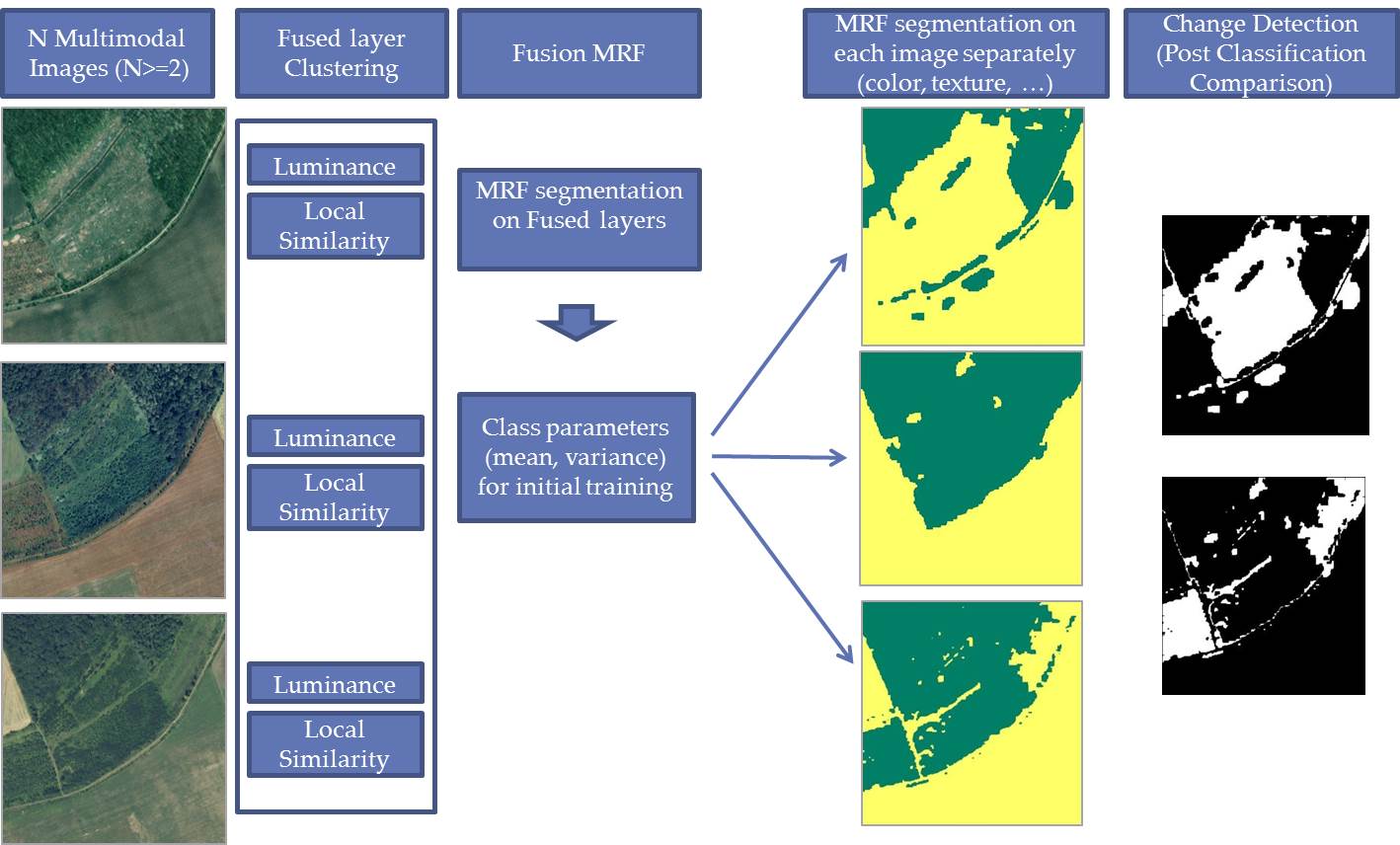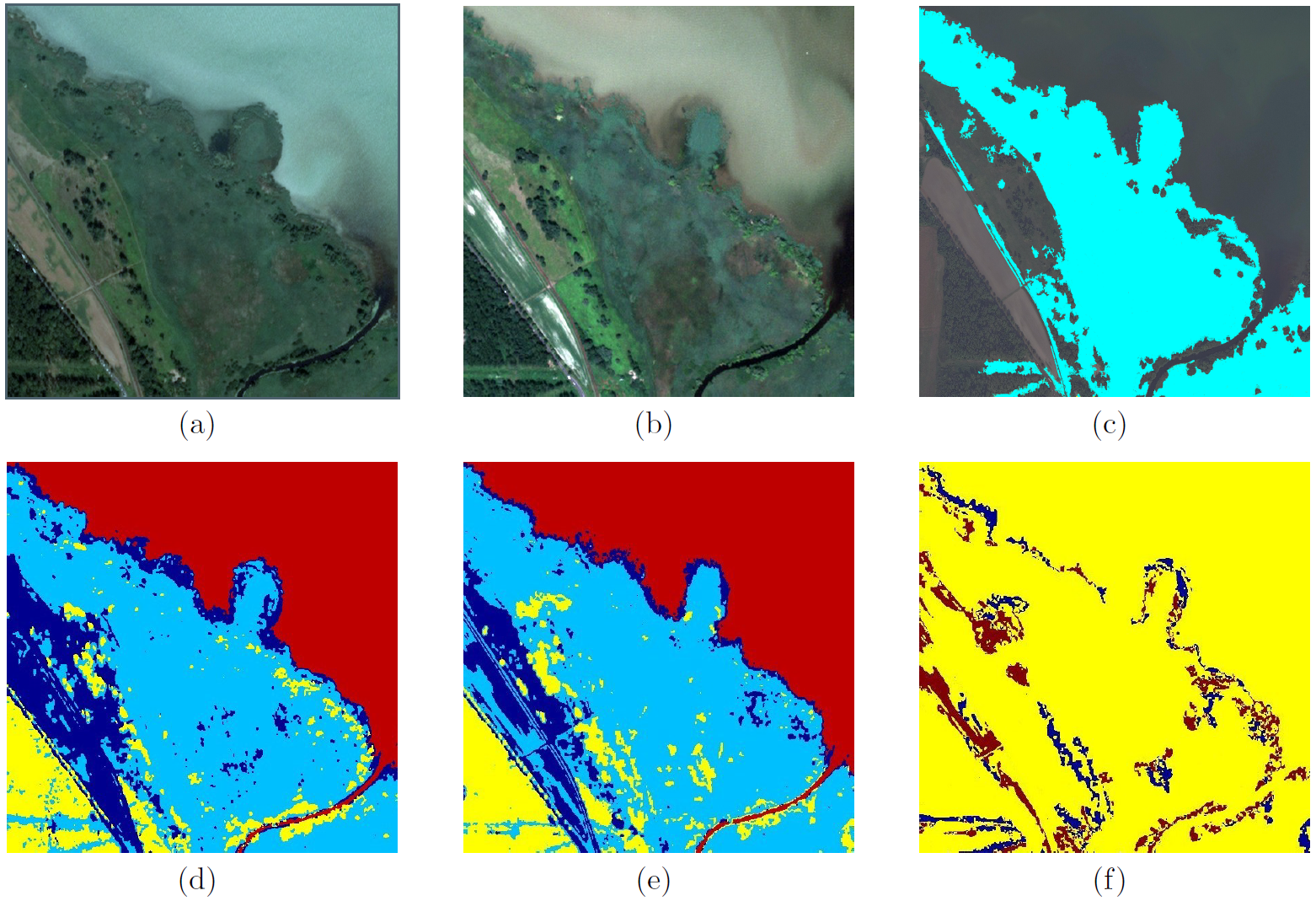Change Detection in Wetlands
Change Detection in Wetlands using Multi-layer Fusion Markov Random Field
Worklow of the Multi-layer Fusion Markov Random Field model
In this experiment, two multi-spectral Pleiades images of years 2012 and 2015 (provided by Airbus Defense and Space Hungary Ltd.) are used to monitor changes of reed in the wetland of Keszthely area, Hungary. The feature vector consists of Normalized Differerence Vegetation Index (NDVI) values, Near Infra Red (NIR) channel, and the Luminance (L) component of the L*a*b* color space. The cluster parameters are then used in fused MRF multi-layer MRF segmentation. The resulted multi-layer labelling is used as initial training for the single layer MRF on each single layer. An average classification accuracy of 91% was obtained for reed class.
Keszthely experiment (a) Keszthely wetland 2012, (b) Keszthely wetland 2015, (c) Ground truth of reed class produced based on field measurement in 2010 (figure courtesy of Andras Zlinszky, MTA Centre for Ecological Research, Balaton Limnological Institute), (d) segmentation results of 2012 image (reed class in light blue), (e) segmentation results of 2015 image (reed class in light blue), and (f) detected changes in reeds (new reed in red, deteriorated reed in blue).
References
[1] M. Shadaydeh, A. Manno-Kovács and T. Szirányi, "Change Detection in Wetlands using Multi-layer Fusion Markov Random Field", What can Remote Sensing do for the Conservation of Wetlands? - 1st International Symposium, Sevilla, Spain, October 2015
[2] T. Szirányi and M. Shadaydeh: "Segmentation Of Remote Sensing Images Using Similarity Measure Based Fusion-MRF Model," IEEE Geoscience and Remote Sensing Letters, vol. 11, no. 9, pp. 1544-1548. 2014
[3] Cs. Benedek, M. Shadaydeh, Z. Kato, T. Szirányi and J. Zerubia, ”Multilayer Markov Random Field Models for Change Detection in Optical Remote Sensing Images,” ISPRS Journal of Photogrammetry and Remote Sensing 2015
These results are outcomes of the DUSIREF project, funded by the Government of Hungary through a European Space Agency Contract under the Plan for European Cooperating States. For more technical information, please contact Dr. Andrea Manno-Kovacs.

